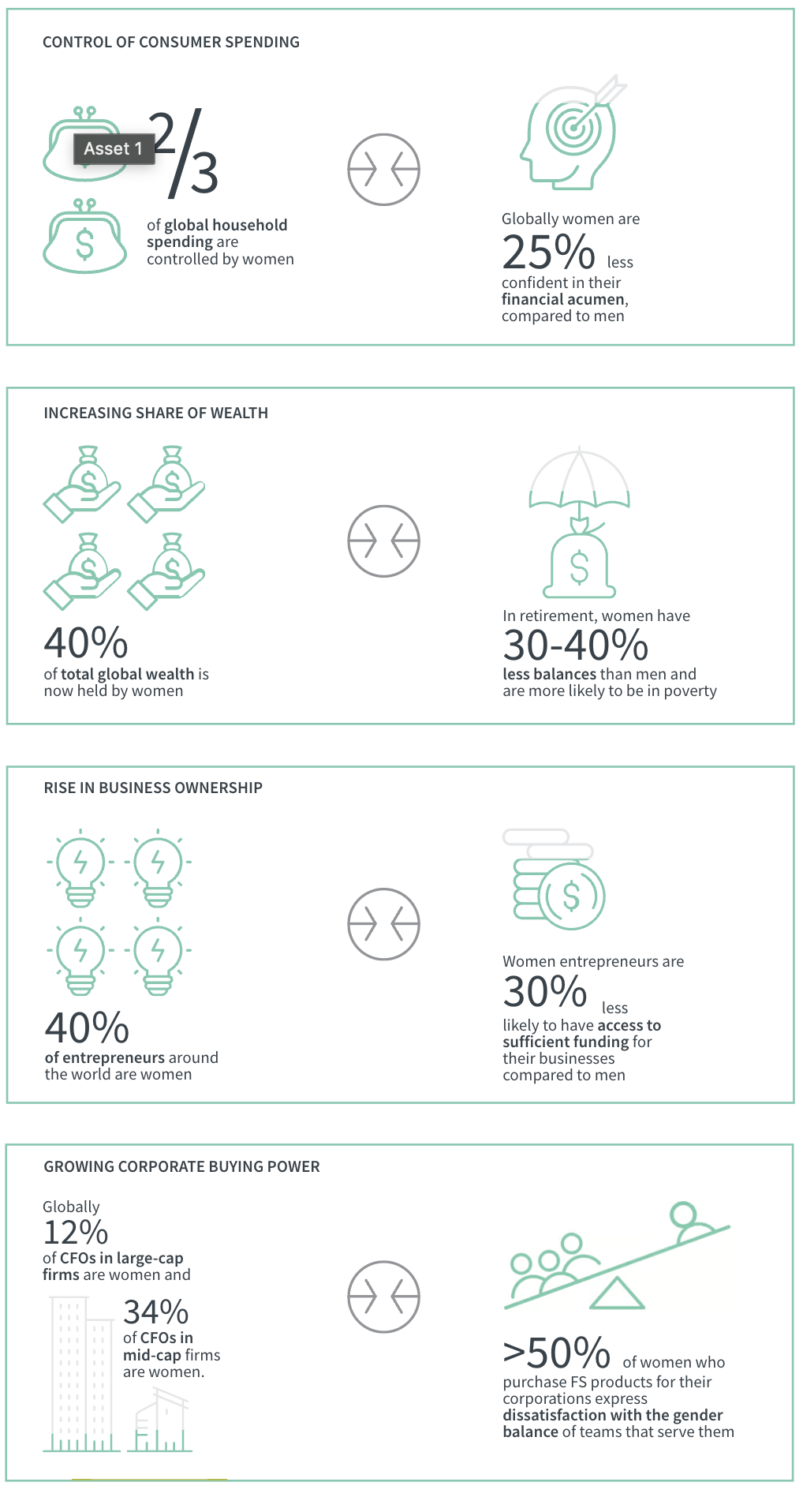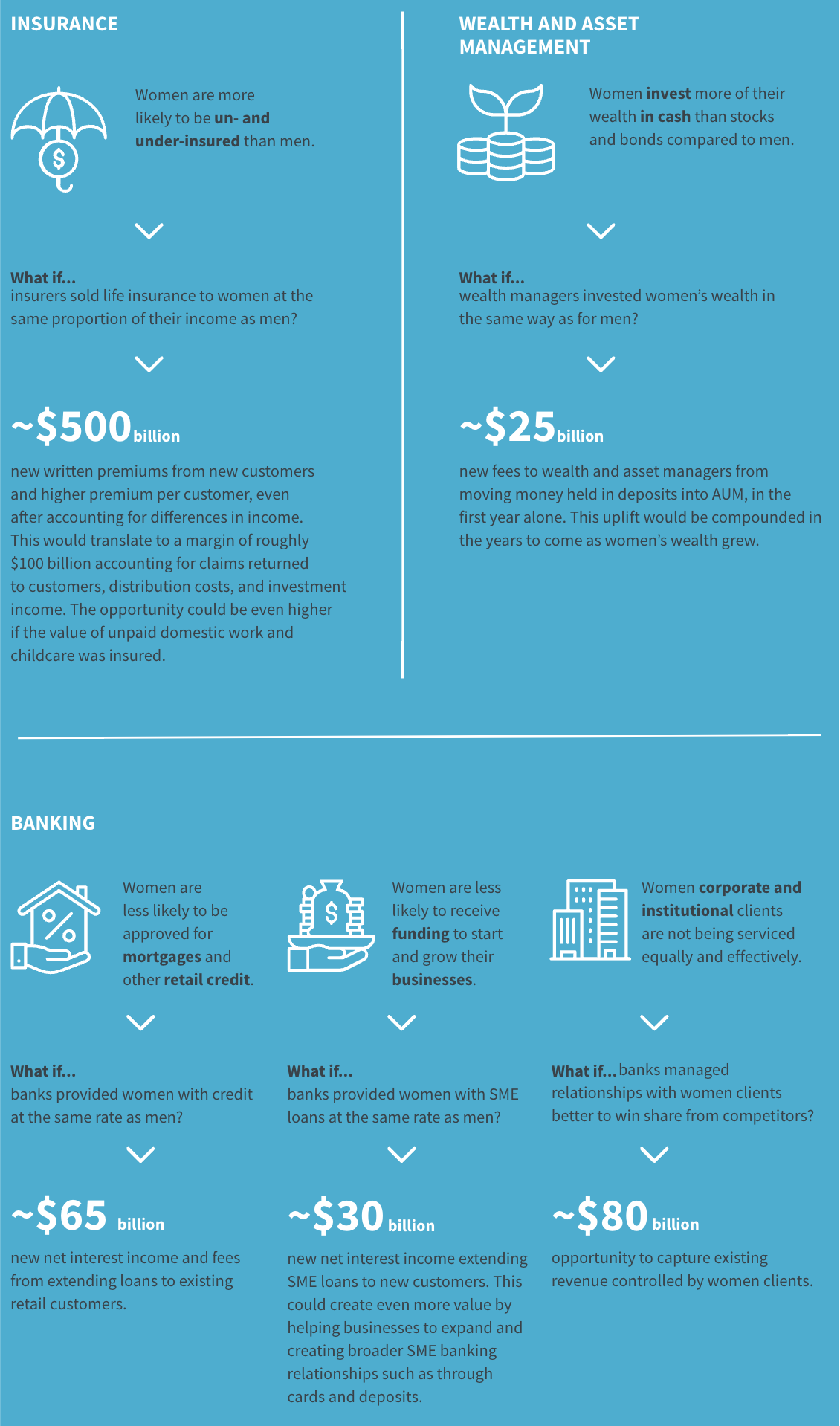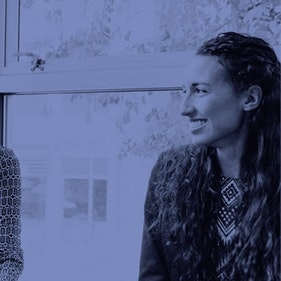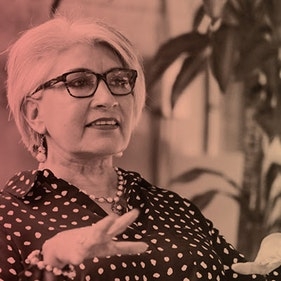The debate around serving women as customers in financial services has not yet been fully explored to date. Although a few firms are advanced in this area, most remain relatively narrow, focused on financial inclusion or on the well-trodden topics of the gaps in wealth and venture capital. In interviews with senior executives, our report heard some initial concern that treating women differently from men could be at best unnecessary, and at worst reductive.
Globally, women are becoming more educated, economically independent, and financially aware. Businesses must not ignore themVishakha Mulye, Executive Director, ICICI Bank
However, evidence shows that approaches that may appear to be gender-neutral in fact default toward men’s needs and preferences. There are unintentional blind spots in how the industry meets the needs of half of the population.
In a competitive world and the era of the experience economy, firms are shifting their approaches to increase their connection with the client. While many factors lead to greater client centricity, gender is an important element. We believe there is significant revenue uplift for those institutions that listen to and understand their customers.
Exhibit: THE GROWING ROLE OF WOMEN IN FINANCE AND THEIR UNMET NEEDS

The $700 Billion Revenue Opportunity
Our reports estimates that financial services firms are missing at least a $700 billion revenue opportunity each year by not fully meeting the needs of women customers. These opportunities come from a combination of new clients, new products and services, and increased market share.
We target women as customers because they represent half of the population. We do these things because they are commercially smartBrian Hartzer, CEO, Westpac
Despite being conservative and quantifying only the areas where there is sufficient empirical evidence, our report still found opportunities that represent 5% to 20% of the total revenue for each market. This is already far greater than the annual revenue of the largest financial institutions globally.
It is only the start of what is possible; there are undoubtedly many more ways in which women’s financial services needs could be better addressed. And the opportunities will continue to grow as women increasingly control more wealth, buying power and financial decisions.
Structural Differences For Women That Shape Financial Needs And Experiences
There is a robust set of evidence showing that women face structural differences from men that affect their financial lives. For example, traditional wealth-planning assumes income will increase steadily year after year. On average, this is more likely to be true for men than women, given career breaks for caregiving. Add to this the fact that women tend to retire earlier, live longer and have higher medical expenses – and standard retirement planning quickly appears ill-suited to the average woman.
We do need to be thoughtful in how we interpret the data and apply insights.
For example, although data shows that women typically invest in more conservative financial products than men, this does not mean women are necessarily more risk averse. Recent evidence shows that when differences in income volatility and lower net wealth are adjusted for, contrary to popular belief, risk appetite between women and men may be comparable. Observed behavioral differences do not always reflect intrinsic differences.
When talking about average trends for women, it is important to recognize that any person may fall anywhere on the range. Cultural context will mean that insights will manifest differently in individual geographies. The goal should be to understand real, unmet needs, rather than falling back on reductive or superficial gender stereotypes and “pinkification”.
Exhibit: WHAT IF… WOMEN WERE BETTER SERVED BY THE FINANCIAL SERVICES INDUSTRY?

Note: Revenue for the insurance sector is not directly comparable to the revenue for the banking and wealth and asset management sectors. Based on the standards for these sectors, insurance revenue is reflected as written premiums, a large portion of which will be paid back to the policyholders in the form of benefits, whereas banking and wealth and asset management revenues are reflected as a mix of fees and net interest income (accounting for the cost of funds), which together are retained to cover operational expenses. The comparable insurance margin on written premiums is approximately 20%.
The Future Of Women As Financial Services Customers
To move forwards, it is not just case of treating women as a single customer segment or addressing their needs superficially. As many interviewees for the report rightly pointed out, this has been done in the past and typically fails.
The product you are selling to men is probably a good product for them. But the product you design for women is going to work better for everybody. Unfortunately, it does not work the other way aroundMary Ellen Iskenderian, President and CEO, Women’s World Banking
Instead, financial services firms need to understand the needs of their women as customers and create propositions that meet these needs. The innovative solutions that will result from taking a gender-lens will not only benefit women, but all customers.
Leading firms use data to identify gaps and blindspots, recognizing that gender-neutral approaches do not necessarily deliver gender-neutral outcomes. They focus on measuring customer outcomes, such as differences in product penetration, utilization and pricing to detect blind spots. They evaluate how coverage teams line up against clients and listen to customers and clients to understand their needs.
For customers, our report recommends actively including gender as one of the lenses applied to proposition design, ruthlessly grounded in the customer need. While empathy has and will continue to be core to customer-centric design, it is not enough to rely on this alone to understand the needs of a diverse customer base.
For clients, this means consciously assembling diverse coverage teams. This includes and goes beyond gender to reflect a range of cognitive and behavioral styles. A mix of complementary skills – product expertise, listening, problem-solving – are needed, together with the ability to connect with each client on a personal level.
Coverage approaches are starting to become more personalized, seeking to understand each client as an individual. Frustration on the frequency of sporting events for networking can be avoided if clients were simply asked about their hobbies. Whilst not possible in mass market segments, firms are still finding ways to structure optionality – such as using a set of goals to guide wealth discussions and draw out individual priorities.






